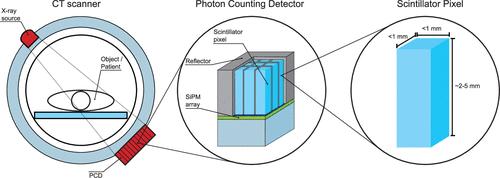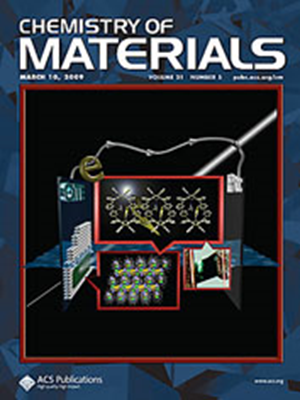间接光子计数 X 射线探测器闪烁体选择指南
IF 7.2
2区 材料科学
Q2 CHEMISTRY, PHYSICAL
引用次数: 0
摘要
本文章由计算机程序翻译,如有差异,请以英文原文为准。

Guidelines for the Selection of Scintillators for Indirect Photon-Counting X-ray Detectors
X-ray photon-counting detectors (PCDs) are a rapidly developing technology. Current PCDs used in medical imaging are based on CdTe, CZT, or Si semiconductor detectors, which directly convert X-ray photons into electrical pulses. An alternative approach is to combine ultrafast scintillators with silicon photomultipliers (SiPMs). Here, an overview is presented of different classes of scintillators, with the aim of assessing their potential application in scintillator-SiPM based indirect X-ray PCDs. To this end, three figures of merit (FOMs) are defined: the pulse intensity, the pulse duration, and the pulse quality. These FOMs quantify how characteristics such as light yield, pulse shape, and energy resolution affect the suitability of scintillators for application in indirect PCDs. These FOMs are based on emissive characteristics; a fourth FOM (ρZeff3.5) is used to also take stopping power into account. Other important properties for the selection process include low self-absorption, low after-glow, possibility to produce sub-mm pitch pixel arrays, and cost-effectiveness. It is shown that material classes with promising emission properties are Ce3+- or Pr3+-doped materials, near band gap exciton emitters, plastics, and core–valence materials. Possible shortcomings of each of these groups, e.g., suboptimal emission wavelength, nonproportionality, and density, are discussed. Additionally, the engineering approach of quenching the scintillator emission, resulting in a targeted shortening of the decay time, and the possibility of codoping are explored. When selecting and/or engineering a material, it is important to consider not only the characteristics of the scintillator but also relevant SiPM properties, such as recharge time and photodetection efficiency.
求助全文
通过发布文献求助,成功后即可免费获取论文全文。
去求助
来源期刊

Chemistry of Materials
工程技术-材料科学:综合
CiteScore
14.10
自引率
5.80%
发文量
929
审稿时长
1.5 months
期刊介绍:
The journal Chemistry of Materials focuses on publishing original research at the intersection of materials science and chemistry. The studies published in the journal involve chemistry as a prominent component and explore topics such as the design, synthesis, characterization, processing, understanding, and application of functional or potentially functional materials. The journal covers various areas of interest, including inorganic and organic solid-state chemistry, nanomaterials, biomaterials, thin films and polymers, and composite/hybrid materials. The journal particularly seeks papers that highlight the creation or development of innovative materials with novel optical, electrical, magnetic, catalytic, or mechanical properties. It is essential that manuscripts on these topics have a primary focus on the chemistry of materials and represent a significant advancement compared to prior research. Before external reviews are sought, submitted manuscripts undergo a review process by a minimum of two editors to ensure their appropriateness for the journal and the presence of sufficient evidence of a significant advance that will be of broad interest to the materials chemistry community.
 求助内容:
求助内容: 应助结果提醒方式:
应助结果提醒方式:


